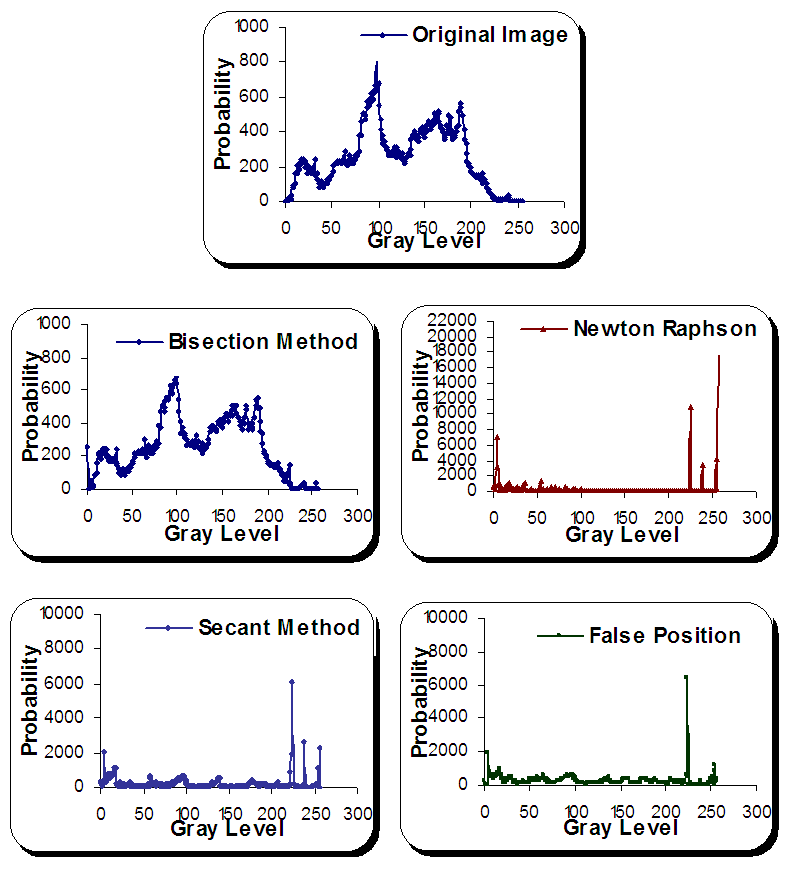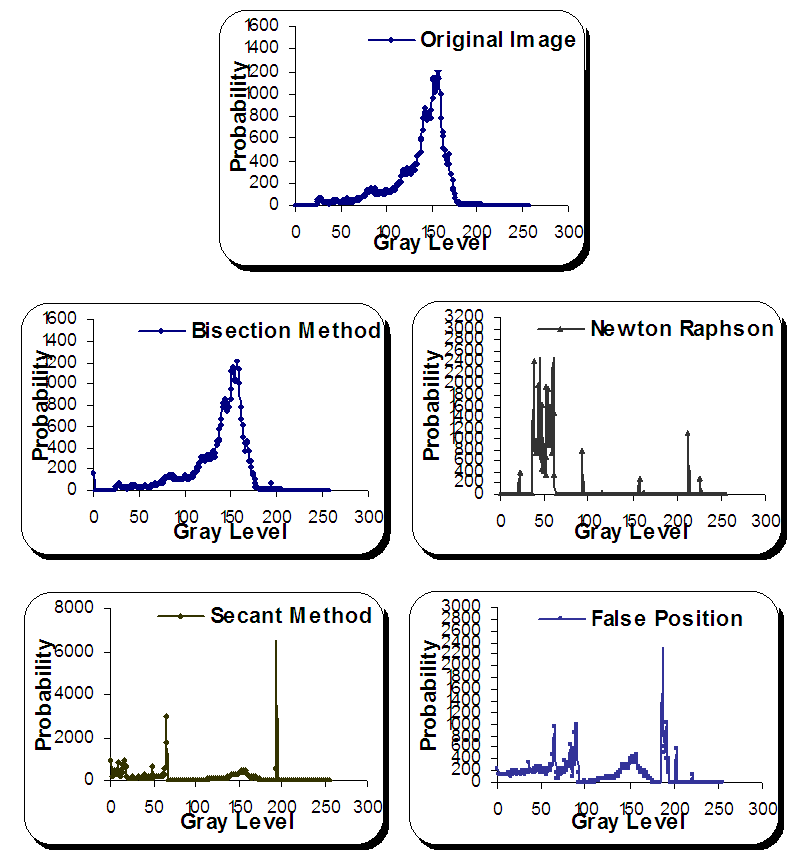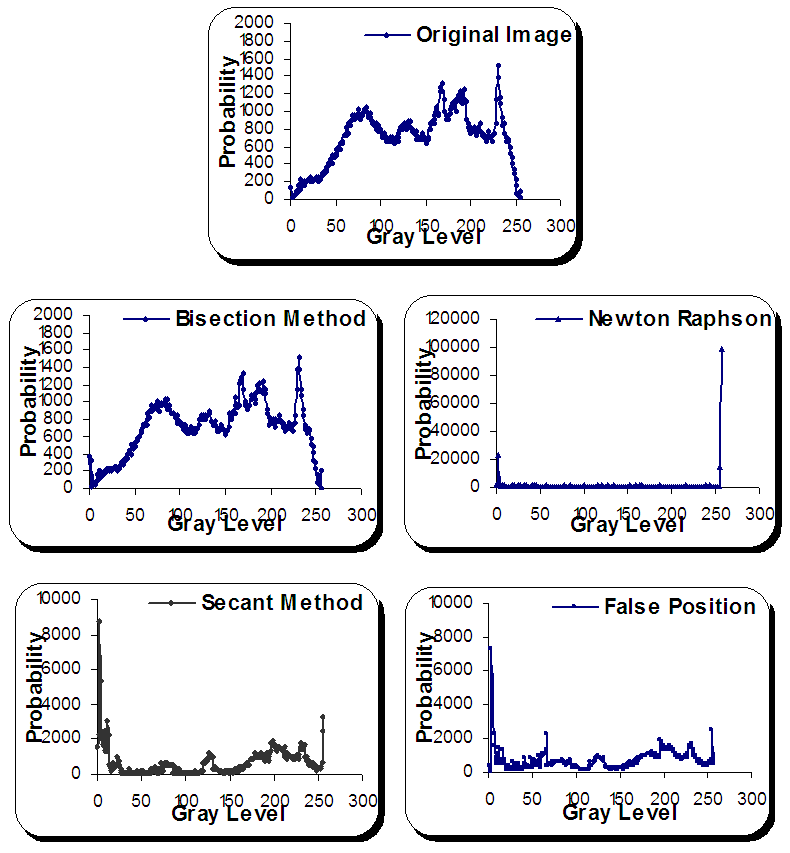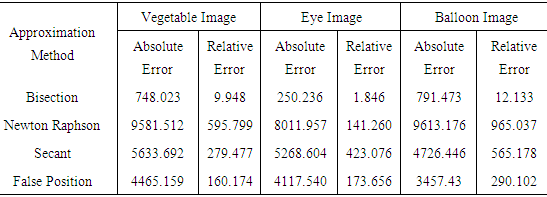-
Paper Information
- Paper Submission
-
Journal Information
- About This Journal
- Editorial Board
- Current Issue
- Archive
- Author Guidelines
- Contact Us
American Journal of Signal Processing
p-ISSN: 2165-9354 e-ISSN: 2165-9362
2017; 7(2): 39-43
doi:10.5923/j.ajsp.20170702.01

The Application of Numerical Approximation Methods upon Digital Images
Ali Jassim Mohamed Ali
Department of Physics, College of Science, Mustansiriyah University, Baghdad, Iraq
Correspondence to: Ali Jassim Mohamed Ali, Department of Physics, College of Science, Mustansiriyah University, Baghdad, Iraq.
| Email: |  |
Copyright © 2017 Scientific & Academic Publishing. All Rights Reserved.
This work is licensed under the Creative Commons Attribution International License (CC BY).
http://creativecommons.org/licenses/by/4.0/

Numerous problems arise in diverse areas of science and engineering, as well as from the physical, computer, biological, economic, and even social sciences. The need for choosing such an application is more clearly and concisely demonstrate how shall the numerical technique be applied in such real-life situations. Numerical techniques, explore the required theory to get numerical solutions to the mathematical problem, especially when computer deals with such huge and complicated calculations. By assumption that the root is exist in image's gray level interval, an attempt to explorer the application of some numerical algorithms is tested here by using some numerical analysis algorithms. An estimation to the error bounds for each approximation process had been calculated. Bisection, Newton Raphson, Secant and False Position methods are some of these methods which have been used here upon some digital images. Among the various used approximation methods and according to subjective and quantitative evaluation results, one can be noted that the Bisection method is the best approximation technique. Besides, image's histogram plays the main role in sequencing such methods of approximations.
Keywords: Bisection method, Newton Raphson, Secant method, False Position method, Absolute Error, Relative Error
Cite this paper: Ali Jassim Mohamed Ali, The Application of Numerical Approximation Methods upon Digital Images, American Journal of Signal Processing, Vol. 7 No. 2, 2017, pp. 39-43. doi: 10.5923/j.ajsp.20170702.01.
Article Outline
1. Introduction
- One of the primary objectives of numerical analysis is to decide which algorithms can be implemented to solve mathematical problems on computer [1]. These algorithms accurately approximate the solution of problems which the latter can't be solved exactly and after that a typical techniques for estimating error bounds for the approximation process can be handled [2]. Many researches focused their attention toward using such methods to solve their problems. C. Thinzar and N. Aye made use of the digital image correlation that is based on the sub-pixel accuracy with the aid of Newton Raphson method to detect storm direction for managing and to prevent the possible land's attacked region [3]. D. Biolè, etc. used Secant method in addition to other techniques to measure apparent contact angles of non-axisymmetric drops [4]. Md. G. Moazzam, etc. used a robust method for solving transcendental equations. The presented method by them gave better results rather than the well-known False Position method and the Bisection method for solving such equations [5]. W. Chu, etc. demonstrated a new registration algorithm based on Newton Raphson iteration process to align images with rigid body transformation [6]. So, an attempt to detect error propagation which can be occurred by applying such numerical methods to digital image had been utilized here. These methods are:
1.1. Bisection Method
- It is one of the most basic problems of numerical approximation. It is also known as the root-finding problem or Binary-search method. It is a process of dividing a set continually in half to search for the solution to a certain problem [2]. It states that if f(x) is a continuous function defined on the interval a<x<b, with f(a) and f(b) of opposite sign, then there is at least one root in the interval between a and b [5]. By setting a1=a and b1=b and take the midpoint of [a,b] such that [7, 8]
 | (1) |
1.2. Newton Raphson Method
- It is one of the well-known numerical approaches for solving a root-finding problem [2]. This technique supposes that po be an approximation to the root (i.e. iteration guess) and belongs to the interval [a,b] in such that f '(po)≠0 and |p-po| is so small and hence [7, 9]
 | (2) |
1.3. Secant Method
- This method uses a secant line joining two points that cut curve's function and can be presented in the following expression [2, 8]:
 | (3) |
1.4. False Position Method
- In this technique, one uses results that are known to be false to converge to the true root. This method chooses an initial approximations po and p1 such that f(po).f(p1)<0. The new approximation value will be then obtained in the way as described in the secant method mentioned above. After that and in order to decide which secant line to be used, the product of f(p2) and f(p1) should be taken and one of the following considerations shall be verified [7]:• Choose p3 as a line joining (p1,f(p1)) and (p2,f(p2)) if f(p1).f(p2)<0.• Choose p3 as a line joining (po,f(po)) and (p2,f(p2)) if f(p1).f(p2)>0.In order to estimate the approximation errors, two methods had been used here; these are the absolute and relative errors as shown in the following expressions [2]:
 | (4) |
 | (5) |
2. Result and Discussion
- For simplicity, an assumption had been made here that the root in the interval (i.e. image's data) is unique and the stopping criteria shall be as follows:
 | (6) |
 | Figure 1. (a) Vegetable image, (b) fitting histogram for (a), (c) Eye Image, (d) fitting histogram for (c), (e) Balloon image, (f) fitting histogram for (e) |
|
 | Figure 2. Histograms for vegetable image before and after numerical methods' applications |
 | Figure 3. Histograms for eye image before and after numerical methods' applications |
 | Figure 4. Histograms for balloon image before and after numerical methods' applications |
3. Conclusions
- By assumption that the root is exist in image's gray level interval, an attempt to explorer the application of some numerical algorithms is tested here by using some numerical analysis algorithms. As a consequence result, one can noticed that the used numerical algorithms distorted the image after all with different distortion ratios depend upon image's histogram. In addition to that, the sequence for techniques' effects is not clear upon such used images but in general one can be concluded that the Bisection method can be recognized as the best one with least absolute and relative errors.
 Abstract
Abstract Reference
Reference Full-Text PDF
Full-Text PDF Full-text HTML
Full-text HTML